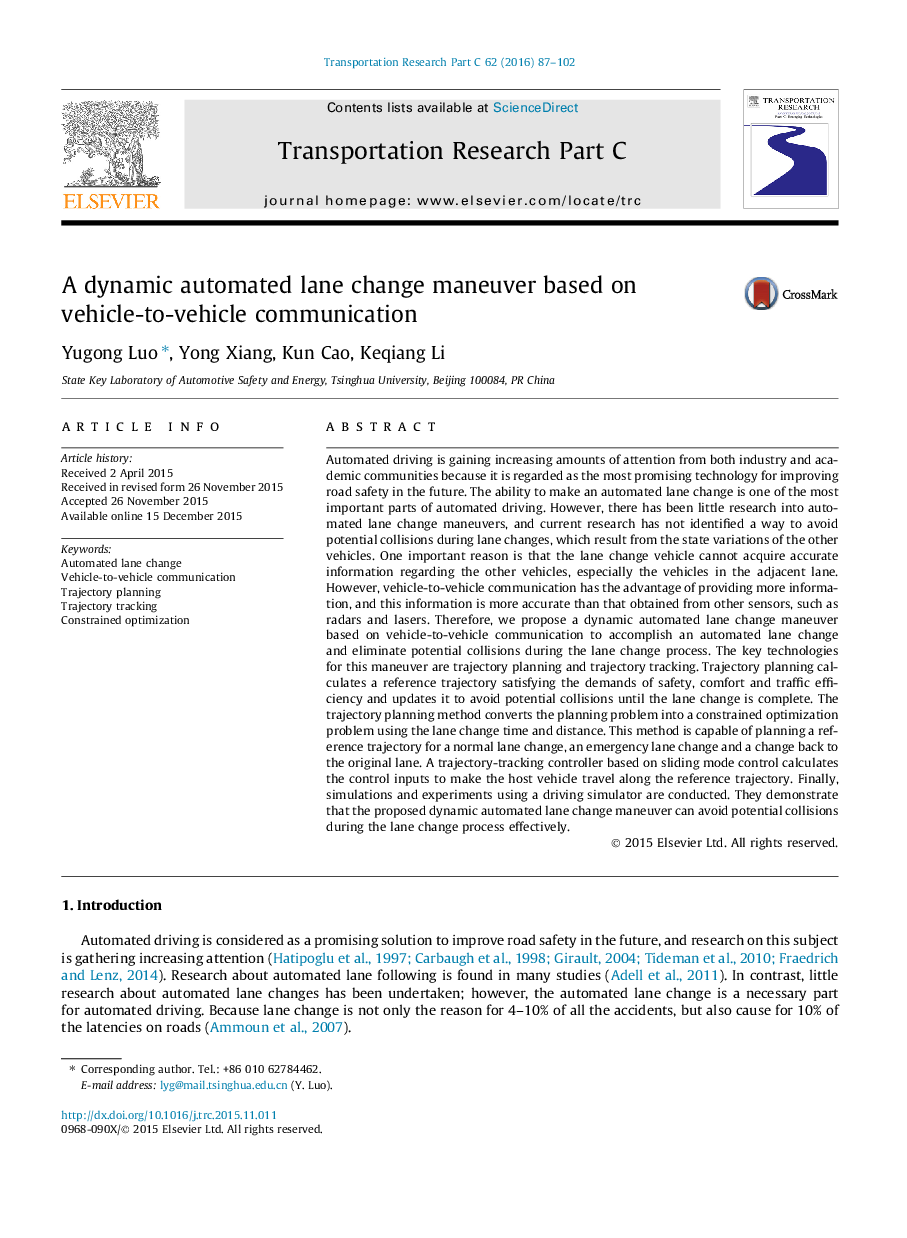| Article ID | Journal | Published Year | Pages | File Type |
|---|---|---|---|---|
| 524846 | Transportation Research Part C: Emerging Technologies | 2016 | 16 Pages |
•The proposed trajectory planning method allows the host vehicle to avoid potential collisions resulting from variations in the states other vehicles.•The trajectory planning method takes safety, comfort and traffic efficiency into account.•The trajectory planning method can plan not only a reference trajectory in which the other vehicles maintain their states but also one in which the states of the other vehicles vary.•The trajectory planning method can plan a reference trajectory that returns the host vehicle to the original lane.
Automated driving is gaining increasing amounts of attention from both industry and academic communities because it is regarded as the most promising technology for improving road safety in the future. The ability to make an automated lane change is one of the most important parts of automated driving. However, there has been little research into automated lane change maneuvers, and current research has not identified a way to avoid potential collisions during lane changes, which result from the state variations of the other vehicles. One important reason is that the lane change vehicle cannot acquire accurate information regarding the other vehicles, especially the vehicles in the adjacent lane. However, vehicle-to-vehicle communication has the advantage of providing more information, and this information is more accurate than that obtained from other sensors, such as radars and lasers. Therefore, we propose a dynamic automated lane change maneuver based on vehicle-to-vehicle communication to accomplish an automated lane change and eliminate potential collisions during the lane change process. The key technologies for this maneuver are trajectory planning and trajectory tracking. Trajectory planning calculates a reference trajectory satisfying the demands of safety, comfort and traffic efficiency and updates it to avoid potential collisions until the lane change is complete. The trajectory planning method converts the planning problem into a constrained optimization problem using the lane change time and distance. This method is capable of planning a reference trajectory for a normal lane change, an emergency lane change and a change back to the original lane. A trajectory-tracking controller based on sliding mode control calculates the control inputs to make the host vehicle travel along the reference trajectory. Finally, simulations and experiments using a driving simulator are conducted. They demonstrate that the proposed dynamic automated lane change maneuver can avoid potential collisions during the lane change process effectively.
